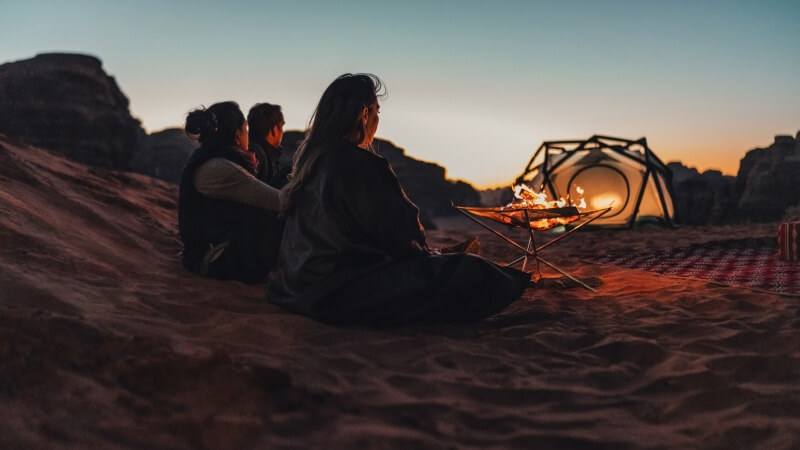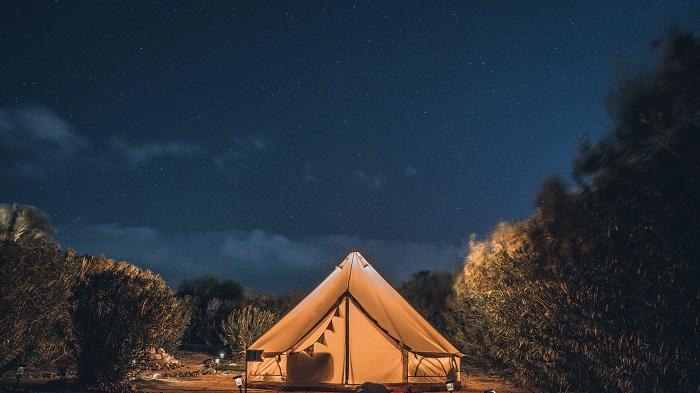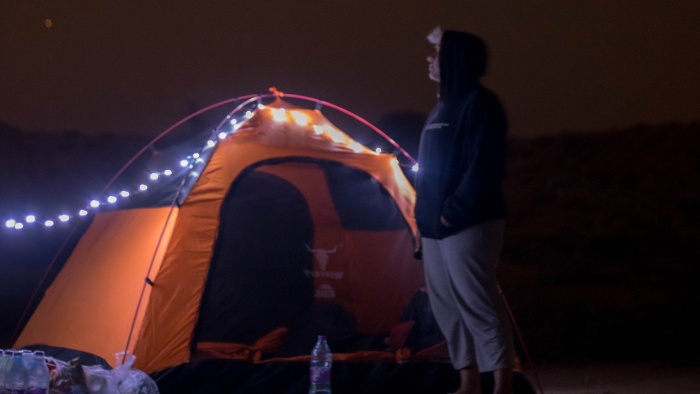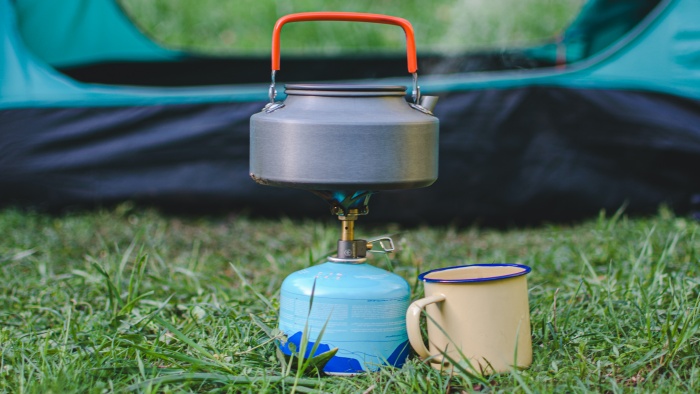Best Camping Setup For Families

Are you envisioning the best camping setup for your family adventures, feeling a mix of excitement and a tad overwhelmed? Navigating the world of camping essentials and finding the perfect camping setup can be both thrilling and daunting, especially when embarking on outdoor escapades with your little ones.
While camping promises a fun-filled experience for everyone, it’s crucial to consider various factors before venturing into the great outdoors, particularly when you have kids in tow. Whether you’re a novice tent camper or a seasoned outdoor enthusiast, this guide to your camping essentials is here to assist you in crafting the best tent camping setup for a delightful, enjoyable, and secure family journey.
Explore the links below for in-depth insights and camping setup ideas that will ensure your family camping experience is nothing short of spectacular.
What Constitutes the Ultimate Camping Setup (Along with Our Essential Picks)
The right shelter
At the core of a stellar camping setup is a dependable tent, a vital camping essential that often stands as the most significant investment. Given its pivotal role, ensuring you make the right choice is paramount.
A good tent not only offers internal shelter against the elements and privacy but also extends its protective reach to outdoor areas, shielding you, your gear, and your gas cooker from both the sun and rain.
Your Tent
With a myriad of options available, our personal preference leans towards tents well-suited for touring. Yet, the market offers a diverse array, from compact dome-style tents tailored to fit your family size with room for gear storage, to more expansive options boasting multiple rooms and incorporated living spaces.

Outdoor Shelter
Every camper should include outdoor shelter in their kit, essential for safeguarding the gas cooking stove and gear from rain and nighttime dew. This could manifest as a tent with a spacious awning, featuring an annex, a separately crafted tarpaulin shelter, or, if transport allows, a standalone marquee or screen room.
Beyond protection, these larger open-air shelters offer a far more comfortable refuge from rain and intense sun than the confines of an enclosed tent.
Tent and Shelter Must-Haves
- Tents
- Marquee / Tarp / Shelter
- Spare Tent Poles
- Spare Tent Pegs
- Loose Wall Panels and Flooring Accessories
- Tent Floor Saver
Essential campsite tools
Equipping yourself with a reliable set of tools is another imperative for a seamless camping experience. These tools prove invaluable in tackling a range of issues and dilemmas that may crop up at the campsite or during your travels.
Fortunately, there are numerous compact and lightweight options available that won’t monopolize your storage space.
While you may not need to deploy many of these tools, having them on hand ensures you’re prepared for whatever challenges may arise during your camping adventures.
Essential Camping Tools
- 2 Mallets/Hammers
- Multi-tool
- Extra Pegs/Stakes
- Screwdriver
- Dustpan/Brush
- Spare Guy Ropes
- Bucket
- Spanner
- Cable Ties
- Broom
- Tent Repair Kit
- Peg/Stake Puller
- Duct Tape
Essential Camping Tools – Campfire:
- Compact Folding Saw
- Small Axe
- Long-Handle Shovel
- Bucket
Power and fuel essentials
For a comprehensive camping experience, you’ll need to cater to various power and fuel requirements—spanning your lighting setup, refrigeration, cooking stoves, campfire, and the ever-expanding array of devices and appliances.
On an uncomplicated unpowered site, necessities may include ice for refrigeration, gas and/or a campfire for cooking, along with batteries and compact chargers for lighting and devices. Occasional access to a power supply becomes essential for recharging batteries and chargers.
However, on unpowered sites demanding more energy for devices like compressor fridges, a portable dual battery pack or a substantial power bank with solar panels becomes imperative.
Despite recent strides in technology reducing pack size, these larger power banks and solar panels may still pose challenges in terms of bulkiness and weight during transportation, alongside everything and everyone else.
Camp Power and Lighting Must-Haves
- Electronic Devices
- Charger Cables
- Powered Site: Hook-up Cable / Extension Lead, Power Board
- Portable Speaker
- Battery Chargers and Cables
- Solar Panels
- Power Banks/Batteries
- Extra Batteries
Camp lighting essentials
Campsites don’t require stadium-level illumination, but an effective lighting setup is essential for various camping activities, providing:
General or ambient lighting for the kitchen, tent, and living areas.
Task lighting for reading, cooking, or playing games.
Directional lighting for spotlights and pathways.
While some lighting products may be bulky for transportation, there’s a plethora of compact torches, headlamps, and lantern options available, catering to your specific needs. Moreover, many of these options are now rechargeable, adding convenience to your camping experience.
Camp Lighting Must-Haves
- Camping Lights for Tent, Awning, and Living Area
- Spare Batteries as Required
- Hand and Head Torches

Camp kitchen essentials
Indulging in delicious meals is a significant part of the outdoor experience, making a well-equipped camp kitchen a camping essential.
Beauty lies in not needing to haul half of your home kitchen to prepare hundreds, if not thousands, of quick and easy meals and snacks at your campsite. Whether you’re a seasoned camper or a novice, creating delightful family camping favorites is achievable with minimal effort.
A fundamental camp kitchen should feature a two-burner stove and/or a campfire, along with dinnerware, cookware, utensils, ingredients, a fridge or icebox, a compact folding pantry, a designated area for food preparation, access to a fresh water source, and a storage solution for water at the campsite.
Opting for neatly stackable items ensures a functional kitchen without taking up excessive space, though it’s worth noting that certain campfire cookware can be a bit bulky and heavy.
Camp Kitchen and Cooking Essentials
Cookware/Utensils:
- Frying Pan and Lid
- Kettle
- Large and Small Saucepan/Pot
- Flat Toaster
- Strainer
- Chopping Board
- Tongs
- Veggie Peeler
- Utility Knife
- Grater
- Small Scissors
- Can Opener
- Small Paring Knife
- Serving Spoon
- Egg Flip
- Gas Lighter/Matches
- Paper Towels
- Bottle Opener
Cooking:
- Camp Stove
- Gas Bottle/Canisters
- Required Gas Fitting
- Aluminium Foil

Dinnerware:
- Cups: Coffee/Wine/Water
- Plates: Dinner, Dessert, Side
- Serving Bowls: Small/Large
- Cutlery: Knives, Forks, Spoons
- Water Bottles
Cleaning and Other:
- Tea Towel, Dish Cloth, Scourer
- Dish Soap
- Dishwashing/Collapsible Sink
- Garbage/Trash Bags
- Water Container
Campfire Cooking Essentials:
- Long Tongs
- Campfire Frying Pan
- Long-Handled Fork
- Jaffle Iron
- Camp Oven
- Wooden Spoon
- Heatproof Gloves
- Gas Cooking Stove
- Camp Oven Lid Lifter
- Wood/Fuel for Fire
Camp refrigeration
Camping refrigeration spans from lightweight esky/iceboxes and 3-way or absorption fridges to heavier, power-hungry compressor fridges. Compact cooler bags are ideal for items needing a cooler environment without full refrigeration.
Given size and weight restrictions, larger fridges and iceboxes are typically impractical. However, effective fridge management negates the need for such options. Fridge stands prove invaluable, elevating the fridge for easy access.
Camp Refrigeration Must-Haves
- Icebox/Fridge
- Power Supply (Refer to 3. Power and Fuel)
- 1-2 Soft or Hard Esky’s
- Icebox/Fridge Stand
Bathroom and laundry essentials
Your bathroom and laundry gear hinge on available facilities and the duration of your stay. With on-site shower, toilet, and laundry amenities, standard items like toiletries, towels, and basic laundry supplies may suffice.
For car campers in areas sans facilities, complexities arise. Introducing a portable toilet, shower, and privacy tent becomes crucial. Fully self-contained camper zones, requiring waste carry-out, may limit access for car and tent campers.
Camp Bathroom Essentials:
Toiletries:
- Toothbrush/Toothpaste/Holder
- Deodorant
- Lip Balm/Moisturizer/Sunscreen
- Shampoo/Conditioner
- Toilet Paper
- Soap and Soap Holder
Camp Bathroom:
- Portable Shower
- Portable Camp Toilets
- Waterproof Sandals/Thongs
- Towels
Laundry:
- Clothes Pegs
- Laundry Powder
- Washing Bag
First aid and safety essentials
Undoubtedly, a well-equipped first aid kit stands among the most crucial camping essentials, especially when camping with children. Equally vital is the knowledge of administering first aid, particularly in emergency situations.
Camping First Aid and Safety Essentials:
- Personal Medications
- First Aid Kit
- Insect Repellent
- Sunburn Cream
- Remote Communication as Required (whistle, mobile phone, satellite phone, AM radio, distress beacon)
- Directions (compass, maps, GPS tracking)
- Extra Drinking Water
Camp furniture essentials
Your tent camping setup should incorporate a table or benchtop for food preparation and casual dining, along with a camp chair and a designated space, like a table or stand, for your cooking stove.
While you might not necessarily require separate furniture for each function, the longer your stay, the more convenient the extra bench and tabletop space becomes.
Undoubtedly, a camping chair is a must-have. However, if packing space is a premium, prioritize those with a more compact pack size. The same principle applies to other items. Additional handy features include shelving or a kitchen pantry to elevate items off the ground and help keep your gear organized.
Camp Furniture Essentials
- Camp Chairs – One Each
- Camping Tables (Folding Tables) – 1-2
- Stand for Gas Cooker
- Collapsible Shelf/Pantry (for extended stays)
Sleeping and bedding essentials
Arguably the second most critical item after the tent is your bedding. Emphasizing the significance of having top-notch and dependable sleeping gear in your camping kit cannot be overstated; it plays a pivotal role in ensuring the best possible night of sleep.
While sleeping gear can be notoriously bulky and challenging to transport, a family of four camping trailer-free, following the beginner-friendly setup outlined in The Campus, might not necessitate extremely compact hiking-style gear. However, compromises may still be required.
Should you choose to allocate more budget for a high-quality sleeping mat, your bed’s doona/quilt might suffice instead of a sleeping bag.
Sleeping and Bedding Essentials:
- Sleeping Bag Each
- Camp Pillow Each
- Camping Mat/Pad/Mattress Each
- Pump (If Required)
- Clothing Essentials
Your outdoor wardrobe varies based on activities, weather, and personal preferences. Opt for compact, lightweight, and comfortable clothing, considering both enjoyment and functionality, especially with limited car space.
Encourage everyone to limit their clothing volume (perhaps the size of a reusable shopping bag each) to streamline packing.
Clothing essentials
General:
- Underwear/Socks
- For Cold/Wet Weather:
- Nightwear
- Gloves
- 1 Outer Layer (Water/Windproof Jacket)
- Thermal Leggings
- Head Beanie
- 2 Insulating Layers (Jumpers/Jackets)
- 2 Long Pants
- Woolen Socks
- 3 Base Layers (Thermal/Other Tops)
- Scarf
- Rain Gear – Rain Poncho, Waterproof Jacket/Rain Jacket, Umbrella
For Warm Weather:
- Summer Wear
- Nightwear
- Sun Hat
- Swimming Goggles
- Bathers/Swimming Top
- Sunglasses
Footwear:
- Water Shoes
- Thongs/Flip Flops
- Sandals
- Walking/Hiking Shoes or Boots
Entertainment essentials
Last but certainly not least, the enjoyable elements to bring camping. Entertainment becomes particularly crucial when kids are involved—not only to keep them active and away from screens but also to offer a welcome break for parents.
Despite limited packing space, numerous entertainment options abound. The key is to focus on what you can bring rather than what you can’t.
While a basketball might be a challenge, consider alternatives like tennis rackets, cricket bats and balls, cards, compact games, pencils and writing paper, small toys, and inflatable items. Additionally, a couple of bikes could easily attach to the tow/hitch bar, weight permitting.
Camp Entertainment Essentials:
- Bike(s)/Helmets
- Rackets/Bats
- Small Board Games/Toys/Balls/Books
- Coloring Book/Color Pencils, etc.
- Beach Towels
- Playing Cards/Instructions
- Life Jackets
- Water Toys
Your vehicle
Having a fantastic camping kit is pointless if you can’t transport it safely. Your choice of vehicle is crucial for comfortable car and tent camping, ensuring the secure transport of you, your family, and your gear to and from your outdoor destination—trailer-free.
Numerous vehicle options exist, and careful research can help you avoid buyer’s regret—spending too much on something either larger than needed or, worse, not spacious enough.
Size doesn’t always correlate with suitability. Several mid-size cars are generally fitting for families or groups of up to four people. If you don’t own the right car, all is not lost—consider renting or hiring one for your camping adventure.
Conclusion
Embark on your family adventures with confidence, crafting the best camping setup for lasting memories. From a reliable tent providing essential shelter to well-equipped kitchens and entertainment options, this guide ensures a delightful experience.
Embrace the joy of camping with the best setup tailored to your family’s needs. Click below for more insights and ideas to make your outdoor journey the best it can be. Happy camping! 🏕️
FAQs
Q1: How can I choose the right tent for my family?
A1: Consider the size of your family, the tent’s portability, and features like awnings or annexes. Opt for a tent that suits your camping style, whether it’s touring or a more stationary setup.
Q2: What tools are essential for a seamless camping experience?
A2: Pack compact essentials like mallets, multi-tools, extra pegs, and a tent repair kit. These tools ensure you’re prepared for any challenges during your camping adventures.
Q3: How can I power my campsite efficiently?
A3: Invest in portable power solutions like solar panels, power banks, and battery chargers. These ensure you have a reliable power source for lighting, cooking, and charging devices.
Q4: What are the must-haves for a well-equipped camp kitchen?
A4: Ensure your camp kitchen includes a two-burner stove, cookware, dinnerware, and cleaning supplies. Neatly stackable items save space while providing functionality.
Q5: How do I manage campsite entertainment with limited space?
A5: Prioritize compact entertainment options such as board games, cards, and inflatable items. Consider space-saving alternatives like foldable bikes for added enjoyment.

